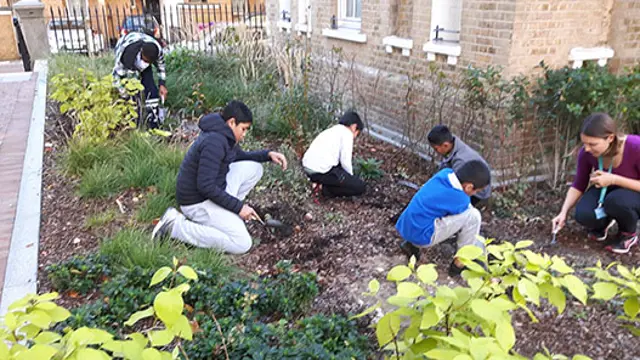World Environment Day

This year we're sharing some of the ways we’re promoting nature in our buildings, estates and green spaces.
Published: 04/06/2021
The theme for this year’s World Environment Day is restoring our ecosystems – exploring what we can all do to reduce the impact of climate change and encourage and restore nature where we live.
With over 133,000 residents, 140 buildings, and 3,500+ employees, we recognise that we can make a positive impact on climate change for our residents, communities and the environment. This World Environment Day we're sharing some of the ways we’re promoting nature in our buildings, estates and green spaces.
When we build homes and create outdoor spaces, we aim to make areas that are pleasant to spend time in and that encourage nature. This year especially, we know that spending time in nature is good for our overall health. Making green space in our communities is also important for reducing the impact of climate change and supporting our wildlife.
You can also watch a timelapse video below of our Shadwell estate regeneration which added a play area with gardens, bug hotels, space to grow food and green roofs over the bin stores:
Green roofs
Adding planting and living walls and roofs can be a lifeline to wildlife in urban areas.
Richard Ellis, our Director of Sustainability, shared the environmental and health benefits of using green roofs: "Living roofs lower greenhouse gas emissions by absorbing CO2, they increase biodiversity by creating habitat for wildlife and improve air quality and the health and wellbeing of our residents."
Some our buildings have roof gardens where residents can grow fruit, vegetables and flowers. Ruth shares how important the roof gardens at Fish Island (below) have been for her family during the lockdown:
"The roof terrace is a truly fantastic place, we have little allotment boxes up there where we can plant flowers and vegetables, the kids can run around which during lockdown has been an amazing space to have access to."
Learn more about our plans
You can read about our Green Infrastructure Framework for Thamesmead here.
Thamesmead has an incredible range of habitat for wildlife with 240 hectares of parks and green space, 7km of canals, five lakes, 5km of river frontage and 30,000 trees. You can watch a film about the Thamesmead landscape below.
Contact us
Got specific questions about Peabody? We’re always happy to help.